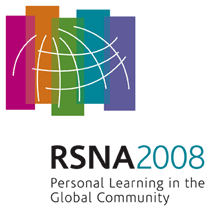
Abstract Archives of the RSNA, 2008
SSK10-01
Technical Development of a Virtual Reality Simulator for GI Fluoroscopy
Scientific Papers
Presented on December 3, 2008
Presented as part of SSK10: Informatics (Education)
Terry S. Desser MD, Presenter: Nothing to Disclose
Jan Ahlqvist PhD, Abstract Co-Author: Nothing to Disclose
Magnus Johansson, Abstract Co-Author: Nothing to Disclose
Andreas Grahn, Abstract Co-Author: Nothing to Disclose
Robert Cheng MS, Abstract Co-Author: Nothing to Disclose
Garry Evan Gold MD, MSEE, Abstract Co-Author: Nothing to Disclose
Radiology residents are exposed to few routine diagnostic barium examinations of the GI tract because of widespread use of endoscopic techniques. We sought to develop a computer simulator of the barium enema (BE) examination to improve residents’ familiarity with colonic anatomy as it impacts BE technique.
Simulator development was divided into two phases: a static phase to simulate positioning of the colon for radiographs, and a dynamic phase to simulate colon filling. High resolution MDCT virtual colonoscopy datasets were used to create the patient model. Source images were imported into the computer graphics program Amira, and the gas-filled colon was automatically segmented. Hounsfield unit values of the segmented volume were increased to levels associated with the presence of barium contrast material to create a dataset visually similar to a single contrast barium enema. Surface models of the skin, colon, and skeleton were generated using the Amira software to create the patient model for the virtual environment.
We developed a static model of the single contrast barium examination in which the user controls rotation of the “patient”. Resultant x-ray projections of the colon as the patient is rotated are generated continuously in real time in a separate window. We developed exercises in which users are instructed to generate the standard overhead views of the colon for the barium enema examination (AP, RAO, etc.) first with fluoroscopic feedback, and then without. In the dynamic simulator phase, fluid motion through the colon is simulated as the user rotates the “patient” such that the “contrast column” flows into gravitationally dependent portions of the colon. The resultant images are similar to the double contrast barium enema examination.
The static and dynamic phases of the barium enema examination can be simulated in a computer, offering the potential to supplement training of Radiology residents in these relatively infrequent but important fluoroscopic procedures.
Computer simulations offer potential for residents to “practice” performing procedures without subjecting patients to radiation or procedural discomfort.
Desser, T,
Ahlqvist, J,
Johansson, M,
Grahn, A,
Cheng, R,
Gold, G,
Technical Development of a Virtual Reality Simulator for GI Fluoroscopy. Radiological Society of North America 2008 Scientific Assembly and Annual Meeting, February 18 - February 20, 2008 ,Chicago IL.
http://archive.rsna.org/2008/6014989.html

